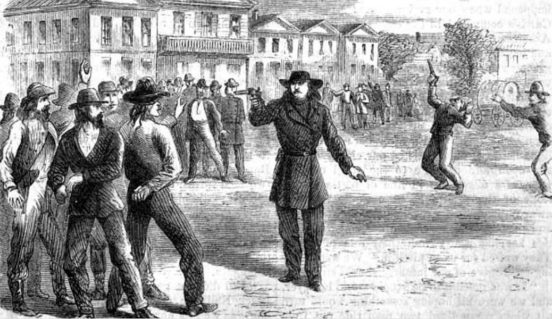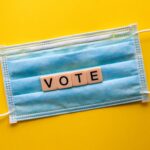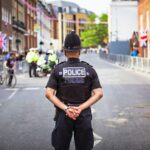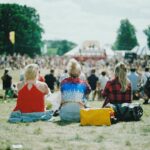As the coronavirus pandemic unfolds, I have watched gun rights organizations like the National Rifle Association (NRA) find a profound sense of justification. I spent a year researching and learning to shoot with gun rights activists in Southern California and was struck by the fact that their reasons for owning firearms were often framed around preparedness for the unknown. While this was often motivated by fear and an accompanying need to protect loved ones, some gun owners delighted in imagining those unknowns, whether they be a violent encounter on the street or a societal breakdown. The hours that they spend at shooting ranges and defensive firearm training courses give these Americans a sense of mastery over a predicted future full of danger.
Many of the gun rights activists who I met stockpile weapons, ammunition, and food. Some have even built protective shelters in case of a major catastrophe like the coronavirus pandemic. In anticipation of widespread food shortages as well as the violence that might result from competition for scarce resources, they believe that owning firearms will give them an advantage and protect their lives.
Mass shootings often precipitate a sudden increase in firearms sales. In this case, firearms sales soared in the United States following news in March 2020 that many European countries had implemented emergency measures in response to the spread of COVID-19. These policies encouraged people to stay at home and observe social isolation (Beckett 2020). Michael Schwartz, the founder of a gun rights activist organization called the San Diego County Gun Owners, told me during the first week of these measures:
The gun shops have been crazy! All the shops are reporting a 600% to 1000% increase in sales and at least 80% to 90% of those sales are to people who have never owned a gun before. I have been at a gun shop and heard a customer come in and ask for “a gun, any gun, doesn’t matter. What do you think I should buy?”
This phenomenon has occurred nationwide. A leading firearms industry trade group has said that background checks for gun purchases increased by 80% in March when compared to February (Beckett 2020). Schwartz went on to say that:
A crisis and fear clarifies [sic] issues quickly. When someone is in fear for their life and their safety, they instinctively and logically understand that guns are the most (and in some cases the only) effective tool for defending your life.
This pandemic has triggered unprecedented shifts in behavior, beliefs about the future, and perceptions of danger that have reinforced many key assumptions that gun rights activists make about the world. For the groups of people that I spent time with, fear is a familiar motivation that convinces them that keeping firearms close by is both instinctive and logical. Schwartz believes that the rest of the world has now begun to understand the day to day reality of living with fear and uncertainty.
In response to COVID-19, The National Rifle Association aired a promotional video filmed in the bleak interior of a shooting range. The clip features an African-American woman holding a rifle across the arms of her wheelchair. Speaking with authority over what sounds like the soundtrack to an epic fantasy film, she says that vulnerable people like her have an even greater need for the personal means of protection at a time like this. She goes on to say that “even liberals” have started queuing up to buy guns. As with all promotional material from the NRA, this video speaks to a world of human threat and asks the viewer to see gun ownership from the perspective of an at risk individual by engaging an empathic emotional response from viewers.
This film uses vulnerability to further a political cause in what has fast become a familiar tactic of the American right wing. By using liberal language and messaging, conservative media and activist organizations have been able to suggest that they fight for equality, while defending issues that often, in fact, decrease equal access to safe, meaningful, and prosperous lives.
Despite what the NRA says, the ability to use a gun in self-defense does not apply equally to all. As countless examples show, working class men, women, and non-binary people of color are likely to encounter a less responsive and often overtly hostile justice system than others in cases where they sought to defend themselves (Carlson 2014a). By positioning firearms as equalizers for vulnerable groups, gun rights organisations challenge stereotypes about their attitudes towards women and minorities while failing to acknowledge different lived experiences of violence on the basis of race, gender, and class (Carlson 2014b).
Take the Pink Pistols, a pro-LGBTQ+ firearms activist group led by a number of transgender women. They sit in the uniquely precarious position of being gun owners within a predominantly liberal LGBTQ+ community and transgender women within a conservative gun owning community. However, gun rights activists from all demographics of my research spoke of firearms as tools of “female empowerment”, occasionally using the phrase “gun rights are women’s rights.”
Joan, a transgender gun owner in her 60s who lives in San Diego county, has found a way to stay afloat financially during the pandemic by taking a job at one of her local gun shops. Her role has been to provide security by walking up and down the large cues that started forming outside of weapons shops to enforce social distancing rules. This position allows her to utilize the very skills she has honed over a lifetime of preparing for such an event.
Many of the LGBTQ+ gun owners that I know voted for President Donald Trump in the 2016 general election, contradicting simple assumptions about how voting behavior divides along demographic lines of gender and sexuality. As the 2020 US presidential election creeps ever closer in the shadow of a global pandemic, it is worth reflecting on this fact: in 2016, whether a household contained firearms predicted which way a person would vote more accurately than any other demographic marker (Cohn and Quealy 2017). Roughly one third of households in the United States contain a firearm and of these 63% voted for President Donald Trump, while 65% of households without guns backed Secretary of State Hillary Clinton. This translates into a more consistent geographical split than even divisions based on race, religion, or whether one lives in a rural or urban environment.
For gun rights activists, this pandemic is part of a future they have always been expecting. But the question should be: Why are many Americans prioritising buying guns to help them prepare for a microscopic virus that is too small for even the sharpest of shooters to stop? It is because guns owners are predicting and placing bets on human nature. The enemies they imagine fending off are not coronavirus, but dangerous criminals provoked into lawlessness in a society somehow reduced to chaos by a pandemic, a foreign invasion, or economic meltdown.
As lockdown measures continue however, the dangers associated with keeping a firearm continue to be overlooked by many gun owners. For instance, owning a firearm is a major risk factor for suicide (Hemenway 2006). Of the over thirty thousand gun deaths each year in the United States, two thirds result from someone turning a firearm against themselves. A steady rise in firearm suicides has, in fact, only recently driven the total number of gun deaths to the highest it has been in twenty years (Pilkington 2018).
Owning a firearm is also a risk factor for intimate partner violence. The presence of guns in a home does not necessarily increase the likelihood of abuse, but it does raise the chances that abuse will become deadly. Despite the NRA’s messaging, it has opposed laws that would prevent suspected domestic abusers from having legal access to firearms (Carlson 2014b: 60). Reports show that domestic abuse has increased around the world as people find themselves locked at home with partners (Kelly and Morgan 2020). In other words, the fact that so many Americans own firearms could make coronavirus control measures extremely dangerous in the United States.
Gun rights activists look into the future at an imagined monster: humans driven to desperation and violence by scarce resources during a crisis. Their vision of the apocalypse is very human and very pessimistic. But whatever the future holds, one thing is certain: with gun sales on the rise, firearm ownership will find a renewed relevance in the 2020 election. Like many of the gun owners I know, Donald Trump may use this crisis as an example of why it is necessary for private citizens to own firearms for protection – even if evidence suggests that they are more likely to be used to take the lives of their owners than defend them.
Joe Anderson received his PhD in Social Anthropology from the University of Edinburgh. His research explores the intersections between the practices and ideologies of defensive gun use, nationalism, gender, race, and ethics.
This piece was originally published in Medical Anthropology Quarterly
References
Hemenway, D. 2006. Private Guns, Public Health. Ann Arbor: The University of Michigan Press.
Cohn, N. & Quealy, K. 2017. ‘Nothing Divides Voters Like Owning a Gun’. The New York Times, 2017, October, 5. edition.
https://www.bbc.co.uk/news/uk-52157620
https://www.theguardian.com/world/2020/apr/01/us-gun-purchases-coronavirus-record
https://www.theguardian.com/us-news/2018/dec/13/us-gun-deaths-levels-cdc-2017










Comments by